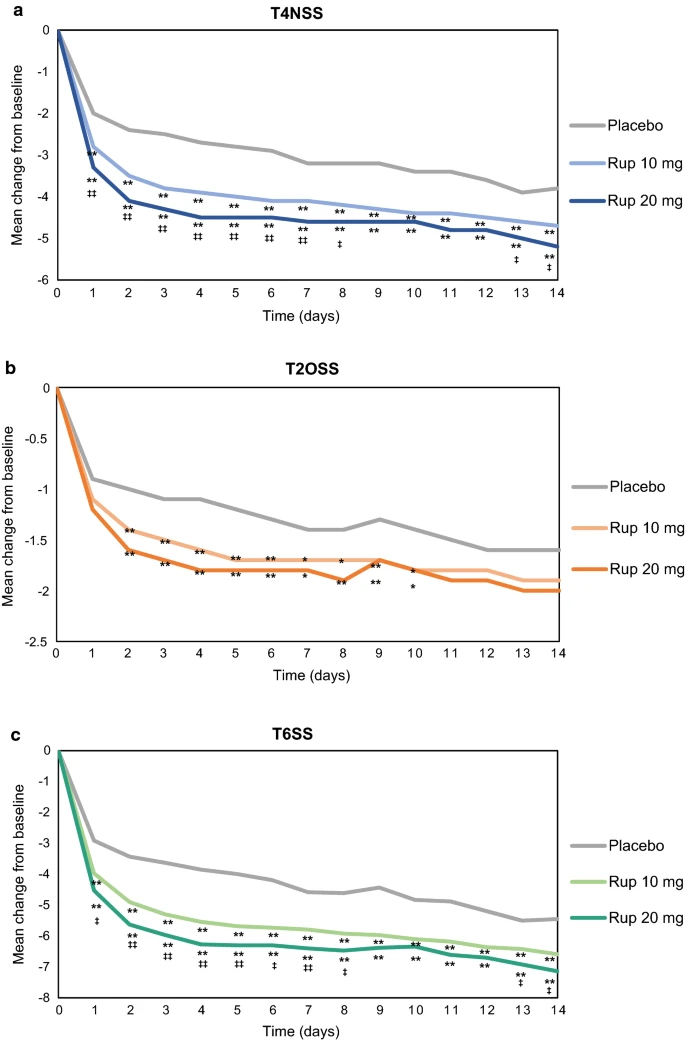- Clinical and Translational Allergy
- Research
- Open Access
Abstract
Background
Different clinical trials showed the superior efficacy of rupatadine compared to placebo at improving seasonal allergic rhinitis (SAR) symptoms, but no study has assessed if the response promoted is clinically meaningful.
Methods
This study is a pooled analysis of data of seven randomized, double-blind, placebo-controlled SAR studies comparing responder proportions upon treatment with rupatadine (10 or 20 mg) or placebo. We evaluated the following symptom scores at baseline (Visit 1) and over 14 days of treatment: Total 4 Nasal Symptom Score (T4NSS), Total 2 Ocular Symptom Score (T2OSS) and Total 6 Symptom Score (T6SS). The proportion of responders (50% and 75% response) and the time to response were compared between groups on days 7 (Visit 2) and 14 (Visit 3). Responder rates were compared between groups on days 7 and 14 for the complete/near-to-complete response for T4NSS (TN4SS score ≤ 2 and each symptom score ≤ 1) and T6SS (T6SS score ≤ 3 and each symptom score ≤ 1).
Results
Data from 1470 patients were analyzed: 332 treated with placebo, 662 with rupatadine 10 mg and 476 with rupatadine 20 mg. The reduction in T4NSS, T2OSS and T6SS over 14 days of treatment relative to baseline was statistically higher in rupatadine groups vs the placebo group, with greater improvements in the 20 mg group. A statistically higher proportion of patients reached the 50% and 75% response for T4NSS, T2OSS and T6SS in rupatadine groups compared to the placebo group across the visits. Among rupatadine-treated patients, those receiving 20 mg compared favourably for both cut-off responses. The time to achieve a proportion of responders was shorter in the rupatadine 20 mg group than in the rupatadine 10 mg and placebo groups for all the symptom scores. The number of patients who achieved a complete/near-to-complete response for both symptom scores was higher in rupatadine groups than in the placebo group, with higher proportions in the 20 mg group.
Conclusions
This responder analysis confirms the superior efficacy of rupatadine vs placebo to treat SAR. Rupatadine promoted higher proportions of responders according to stringent response criteria and in a dose-dependent manner, with faster and higher response rates in the 20 mg group.

No comments:
Post a Comment